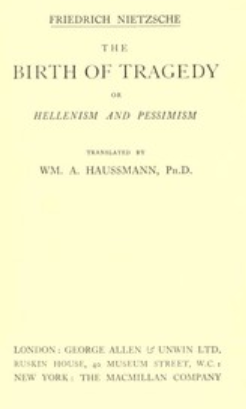|
admin 2025-4-10 20:52:25

The Birth of Tragedy; or, Hellenism and Pessimism★★★★
9
Nietzsche, Friedrich Wilhelm・・Ended
Updated: 1872年
Content length: 00
language:
Source: Project Gutenberg
9
Score
5★
8%
4★
25%
3★
33%
2★
8%
1★
25%
Synopsis
"The Birth of Tragedy; or, Hellenism and Pessimism" by Friedrich Wilhelm Nietzsche is a philosophical work written in the early 19th century. This foundational text explores the origins of Greek tragedy, emphasizing the interplay between the Apollonian and Dionysian elements of art and existence. Nietzsche presents a duality where the rational and structured aspects of Apollo contrast sharply with the chaotic, passionate nature of Dionysus, ultimately arguing that both forces are essential to the human experience and the creation of art. The opening of this work provides a deep insight into Nietzsche's philosophical explorations surrounding the nature of existence and art. He reflects on experiences from his youth and the foundational influences of Hellenism, Schopenhauer, and Wagner upon his thinking. Nietzsche begins to articulate the essential conflict between the beauty represented by Apollo and the primal chaos embodied by Dionysus, suggesting that Greek tragedy arose from a reconciliation of these contrasting forces. Through this lens, he begins to question the notion of pessimism and its relationship with artistic creation, hinting at a complex relationship between joy, suffering, and the necessity of art for human life. The prologue sets the stage for the intricate analysis of Greek aesthetics that follows, inviting readers to consider the deeper implications of tragedy as a reflection of life's dualities.
| |
收录书单